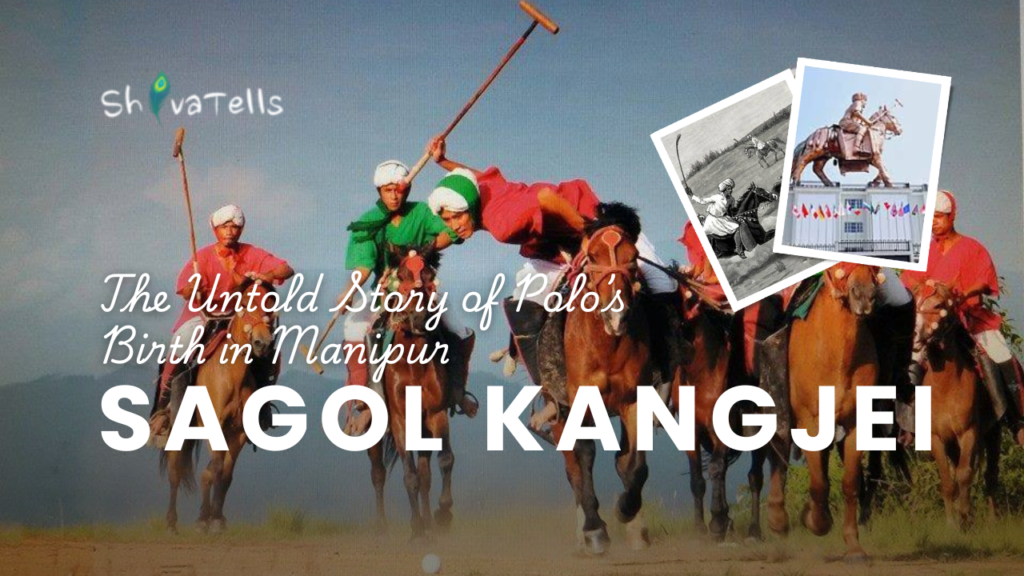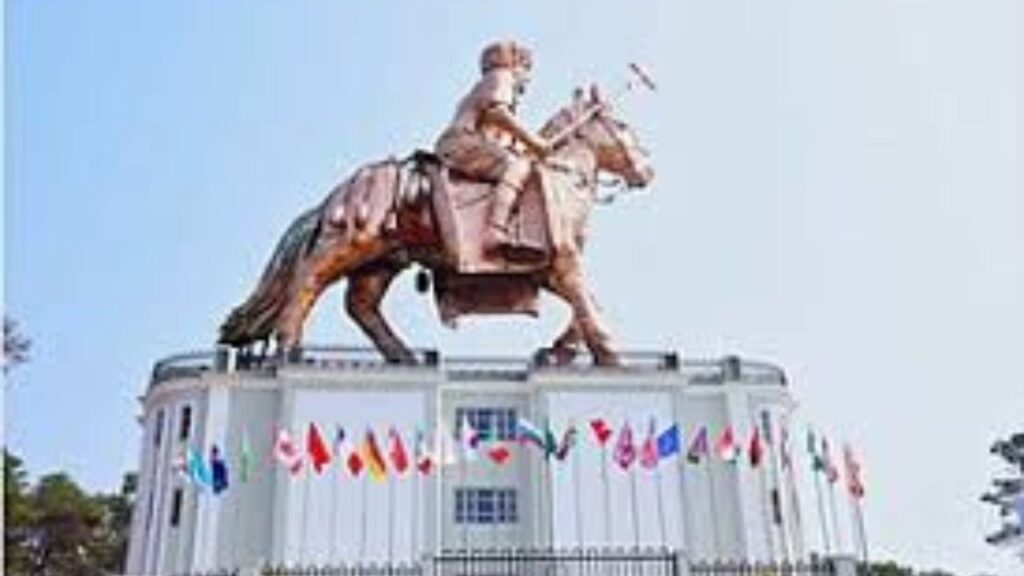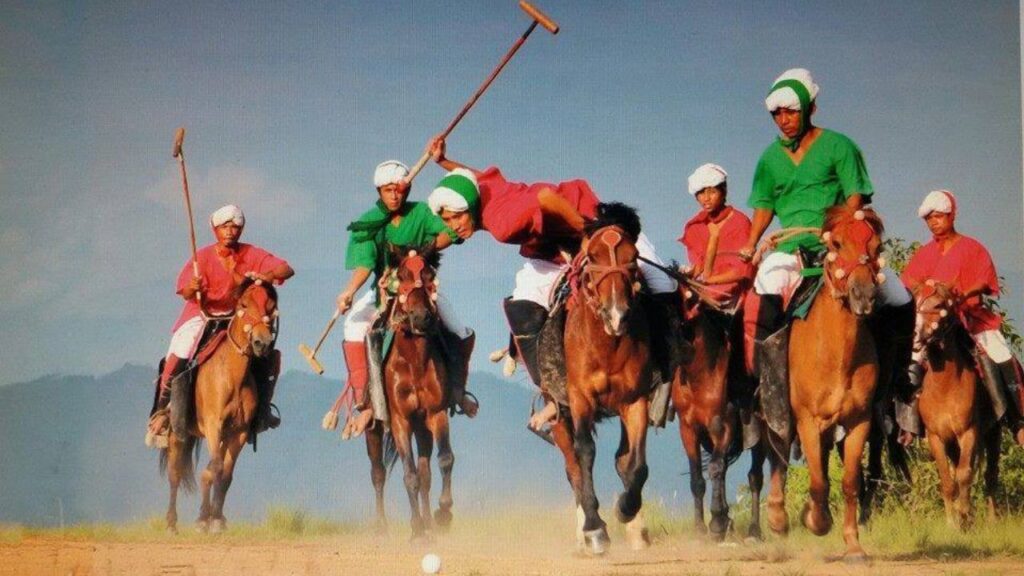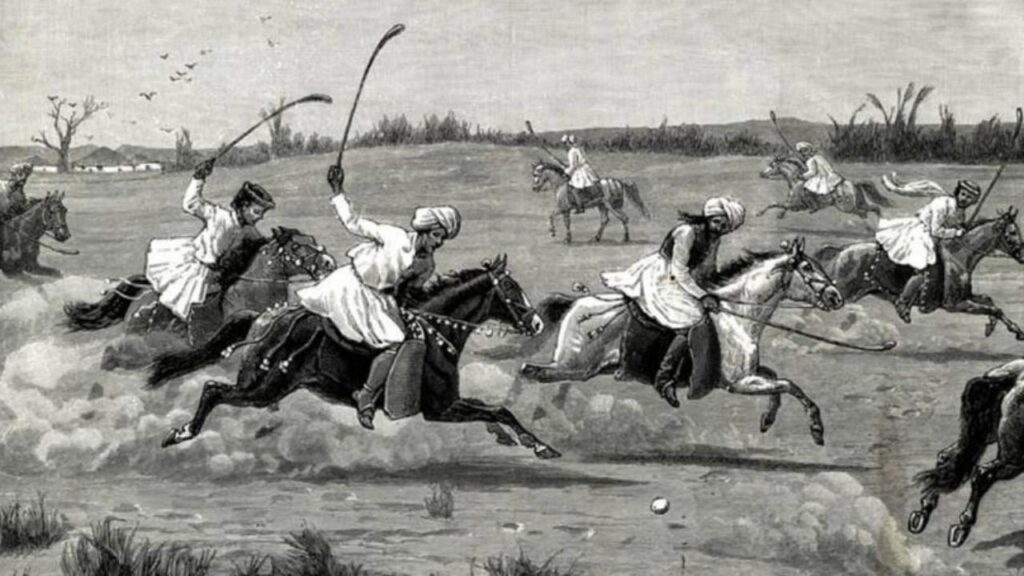I had always thought of polo as a British sport—a game of royalty played on lush green fields with tall, muscular horses and men in crisp uniforms. But then, Manipur changed my perception forever. I was in Imphal when I first heard the name Sagol Kangjei. An elder at a tea stall told me, “This is where polo was born, my friend. The world may call it a royal sport, but for us, it’s an ancient tradition.” His words stuck with me. Could it be true? Was modern polo actually rooted in the rugged landscapes of Manipur? I had to find out.

Table of Contents
A Sport Older Than History Itself

My journey took me to the Imphal Polo Ground, the oldest polo ground in the world still in use. But before stepping onto the field, I wanted to understand the sport’s origins. Sagol Kangjei is not just a game. It is a legacy of the Meitei warriors of Manipur. The name itself comes from:
- Sagol – meaning ‘horse’
- Kangjei – meaning ‘stick’
Long before the British ever knew of polo, the Manipuris played it as a way of life. The game was fast, fierce, and played with unmatched skill. There were no helmets, no protective gear—only raw talent, agility, and bravery. In the old days, warriors used Sagol Kangjei as combat training. It was not just about scoring goals; it was about developing sharp reflexes, control, and courage. This was war in the form of a sport. And then, the British came.
When the British Discovered Polo in Manipur
The story goes that in the 1850s, British officers stationed in Manipur were mesmerized by this fast-paced horse game. They had never seen anything like it. The way Manipuri players controlled their ponies with such ease, galloped fearlessly, and swung their sticks with precision—it was breathtaking. The British were so captivated that they decided to take the game back to their homeland. But here’s the twist—they changed it.
- They introduced structured rules
- They made the field larger
- They started using bigger, well-bred horses
- They called it “polo“ (derived from the Tibetan word “pulu” meaning ball)
And just like that, Sagol Kangjei became modern polo. From England, the game spread to Europe, America, and beyond. Today, polo is played globally, with prestigious tournaments and elite clubs. But how many people know that it all started here, in a quiet corner of Northeast India?
The Real Heroes – The Manipuri Ponies

As I stood on the sidelines, watching a Sagol Kangjei match unfold, my eyes were drawn to the ponies. Unlike the towering, muscular polo horses we see today, Manipuri ponies are small, agile, and incredibly powerful. Their speed and stamina are unmatched, making them the true warriors of the game. However, these ponies are now facing extinction.
Due to urbanization, shrinking grazing lands, and lack of conservation efforts, the number of Manipuri ponies has dwindled drastically. If these ponies disappear, a piece of history will vanish with them. Efforts are being made to preserve them, and one of the biggest ways to support their survival is by reviving Sagol Kangjei on a larger scale. Watching these ponies in action made me realize: This is more than a game. It’s a fight for heritage.
A Match That Gave Me Goosebumps
The match began with a loud cheer, and within seconds, the field transformed into a battlefield.
- Ponies dashed across the grass like lightning
- Players swung their bamboo sticks with effortless precision
- The ball flew across the field, chased by fearless riders
Unlike modern polo, which follows rigid rules, Sagol Kangjei is wild, free, and unpredictable. The players maneuver their ponies with body language alone—no saddles, no reins, just pure connection between rider and horse. It was not just a sport—it was a warrior’s dance. The intensity, the speed, the raw skill—it all made me realize: This is the real polo. This is where it all began.
Why Every Indian Must Witness Sagol Kangjei

Watching this game in its birthplace was one of the most powerful experiences of my travels. Here’s why you need to witness it too:
1. Feel the Pride of an Ancient Sport
Knowing that India—not Britain—gave the world polo fills you with a sense of pride and respect for our heritage.
2. Experience Polo in its Purest Form
Forget the luxury clubs and champagne-filled polo matches. This is polo the way it was meant to be—raw, real, and thrilling.
3. See the Endangered Manipuri Ponies
These ponies are living history. Watching them in action is like stepping into a time machine.
4. Immerse Yourself in Manipuri Culture
Sagol Kangjei is not just a sport—it is a festival of tradition, community, and legacy.
5. Be Part of the Revival
By watching and supporting Sagol Kangjei, you are helping keep this sport alive and ensuring that the Manipuri ponies don’t disappear.
Best Time & Place to Watch Sagol Kangjei
If you’re planning a trip to Manipur, make sure you don’t miss this legendary game.
- Best Time: The Sangai Festival in November is the best time to witness a grand Sagol Kangjei match.
- Where to Watch: Head to the Imphal Polo Ground, where the game has been played for centuries.
Final Thoughts
As I left the field, my heart was filled with a newfound respect for Manipur. The world may have rebranded Sagol Kangjei as polo, but the real spirit of the game still breathes in the hills of Manipur. Here, ponies still gallop across ancient fields, players still ride with fearless skill, and history still lives on. But for how long?
As modern polo continues to grow worldwide, it’s time for us to recognize and honor its true roots. Sagol Kangjei is not just a sport—it’s India’s gift to the world. So, if you ever get the chance, come to Manipur, watch the game, and witness history in motion. And next time someone tells you polo is a foreign sport, just smile and say, “Let me tell you the real story of Sagol Kangjei!”
Read More Stories From Manipur
- Loktak Lake: Shiva Tells’ Unforgettable Adventure in a Floating Paradise!
- Thang-Ta Manipuri Martial Art: A Legacy of Warriors and Dance
- A Journey to the Heart of Meitei Tribe Culture: Andro Village
